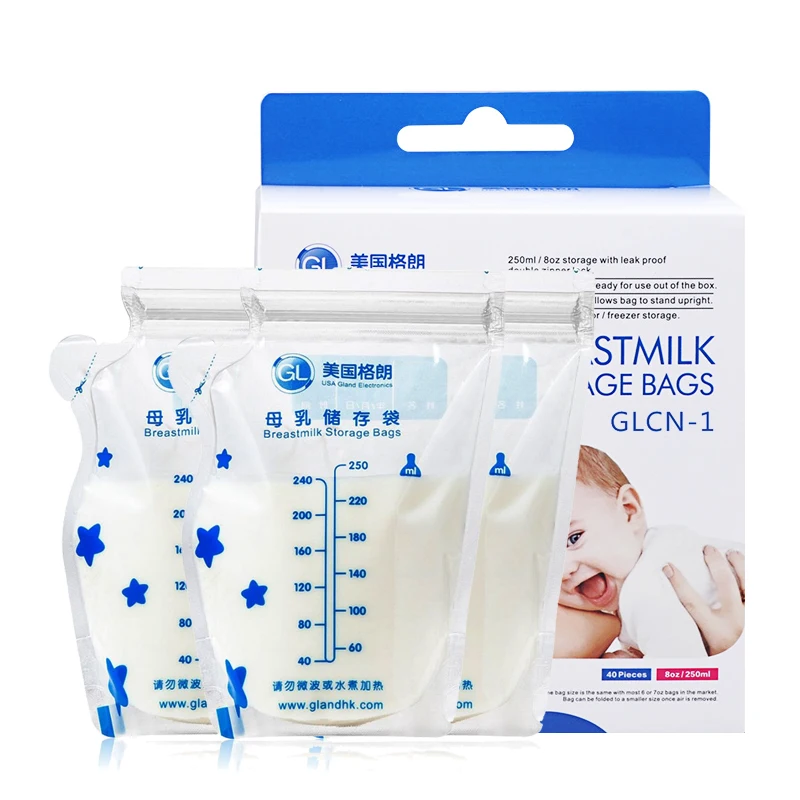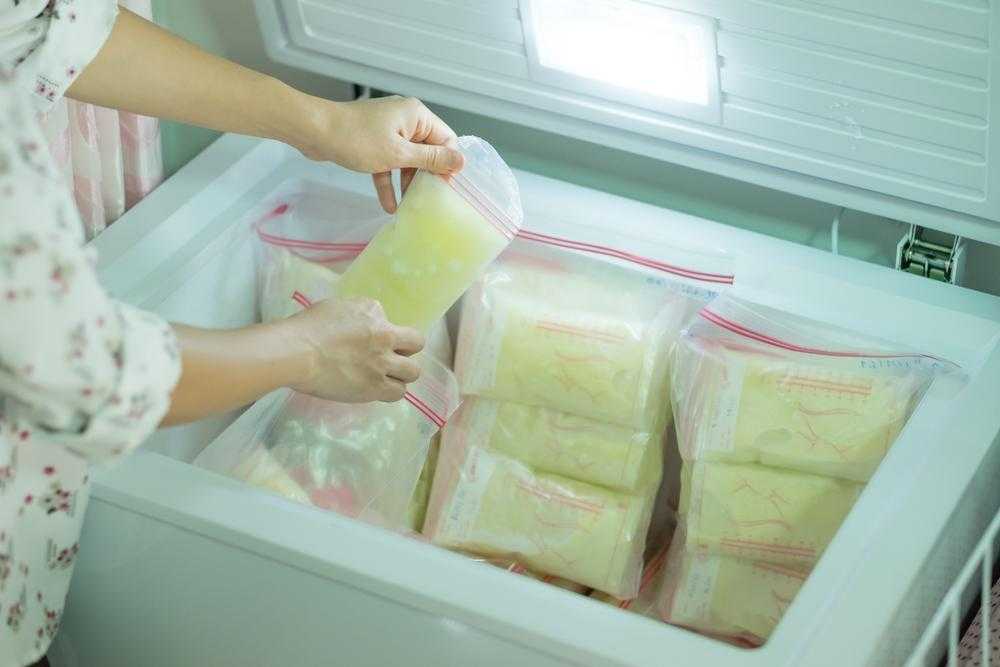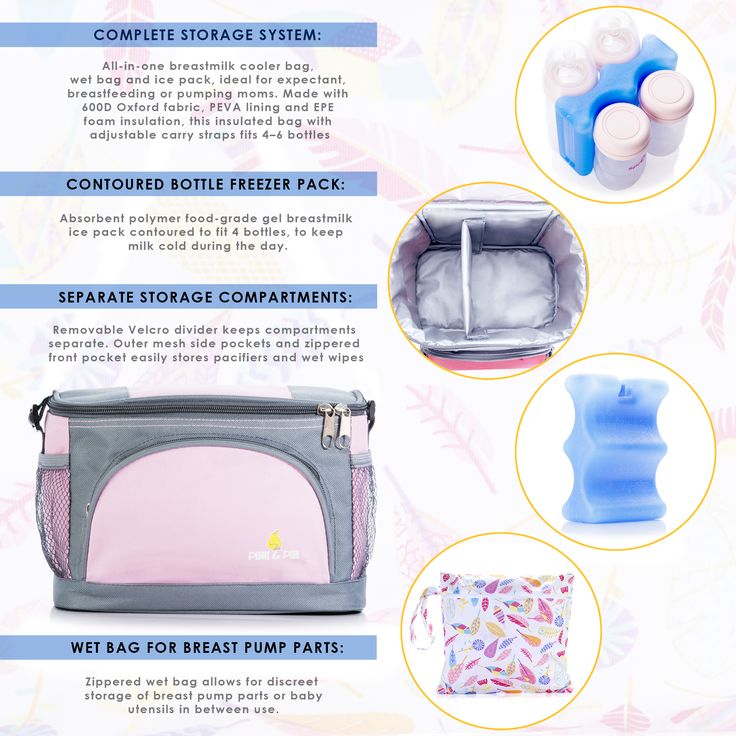Freezing baby food in breast milk bags
Breastmilk Bags - 8 Other Ways To Reuse Breast Milk Storage Bags
It doesn’t matter whether your breastmilk bags are reusable or from the unused stash, do not throw them away. With everyone trying to reduce waste, there are so many ingenious ways to reuse or upcycle your belongings instead of throwing them out. Here are 8 other ways you can put those breastmilk bags to work without adding more stress on Mother Earth.
1. Freeze smoothies
Image | Pinterest
Store your precut fruit mix in them because they are great for rush days when you only have time to make a quick smoothie for breakfast. Just cut up your fruits on grocery day and mix them up into whatever combos you prefer before freezing them. That way they are always ready for you when you need to make a quick smoothie.
2. Freeze baby food
Image | Musely
Aside from storing milk, breastmilk bags are great for storing homemade baby food as well. These are great for busy mums who need to cook them in huge batches over the weekend and weaning babies. Just freeze according to the portion you want. No eyeballing needed since you already have the measurements printed on the bags for you.
3. Store medication that leaks
Image | Pinterest
Have you ever tried putting all your bottle medications into a ziplock bag that’s a tad too big only to have them knock against each other and spill? Well, then try using breastmilk bags instead because not only will they stay upright all the time, you will also be able to fit in the syringe together.
4. Protect your phone from getting wet
Image | shakymommy
Knowing how well breastmilk bags are made and how leak proof they are, you could actually use them to protect your phones from getting wet. Of course, we’re not suggesting that you take your phone diving with you, but those double ziplock bags will definitely make your phone splash proof.
5. Bag your toiletries when travelling
Image | mrsmommyholic
Breastmilk bags are also great when you’re travelling with different toiletries. Smaller bags mean you can pack your toiletries into groups rather than dump several bottles into a large ziplock bag only to have them all mixed up.
Smaller bags mean you can pack your toiletries into groups rather than dump several bottles into a large ziplock bag only to have them all mixed up.
6. Freeze your leftover boozy punch from Christmas
Image | Pinterest
Have some leftover punch from Christmas? Don’t throw them out! You can pack them into serving size with these breastmilk bags! Great for late night drinks and you won’t even need to break out the blender or worse, wake everyone up.
7. Soups or Broth
Image | rays_zen
If you’re on a keto diet, this is a good tip for you because now you have a way to keep all that bone broth you’ve been slaving over the stove for hours. Okay so maybe your pressure cooker did all the work, but with these breastmilk bags you will be able to store each portion easily and enjoy them throughout the weeks.
8. Packed fruits for the kids
Image | madtownworkit
This is a super great idea when you’re going on road trips with kids. Pack crackers, fruits or even pretzels into these breastmilk bags and hand them out to each child when they are feeling hungry. No need for unnecessary pit stops along the way and they can always reseal the bag themselves if they cannot finish.
No need for unnecessary pit stops along the way and they can always reseal the bag themselves if they cannot finish.
Did we miss out any other ingenious uses for breast milk storage bags? Let us know in the comment box below!
Got a parenting concern? Read articles or ask away and get instant answers on our app. Download theAsianparent Community on iOS or Android now!
Everything You Need to Know About Storing Homemade Baby Food
Save for Later!
This post may contain affiliate links. This means I get paid a small commision for things I gladly recommend at no extra cost to you.
If you are ready to prepare some solids for your baby, you are going to need to know how to store your homemade baby food. Ever since I started my Instagram account, I have shared many of my followers’ baby food preps from real moms. Here are 4 outstanding before and after examples of baby food preps from real moms you must see. It’s my way of praising the parent for all their hard work and also to show different recipes, explain how long it took, etc.
The most asked question I get from these posts is “What container is that?”. With so many options for storing homemade baby food these days, how do you choose? Here are seven different “buckets” and my view on each.
More baby food tips:
- Best Blenders for Baby Food
- 13 Baby Food Prep Hacks That Save Time & Money
- FREE PRINTABLE: Baby Food Meal Planner
But before we get to the storage solutions, make sure you know that baby food lasts 3 days in the fridge, and 3 months in the freezer. That’s why it’s so important to label the storage solution of your choice with the name of the combination and the date it was stored in the fridge or freezer.
So let’s get started on all your storage solution options!
1. Ice trays
The simplest and probably cheapest way to store homemade baby food is in ice cube trays. These are obviously easy to find and cheap – you can even find them at the dollar store. These are a great starting point for young babies as the volume needed is not as high. Filling up 2-3 ice cube trays would be easy and quick and could last a 4-6-month-old the rest of the week (since at this stage, it’s mostly experimenting with food and testing for allergies).
Filling up 2-3 ice cube trays would be easy and quick and could last a 4-6-month-old the rest of the week (since at this stage, it’s mostly experimenting with food and testing for allergies).
A Must Read: 3 Mistakes New Parents Make When Starting Homemade Baby Food
2. Store Bought Baby Food Glass Jar
If you’ve purchased some store bought baby food (it’s ok!), but don’t throw them out, it’s perfectly fine to re-use them – I did! I used these to store a large batch of my Hearty Cauliflower and Chicken soup.
3. Mason Jars
Mason jars are my favorite for storing homemade baby food. They could be found anywhere these days, even at the dollar store. They come in small, medium and large so you have plenty of options. Make sure wash thoroughly before you first use them – even sterilize them just in case. If you decide to go this route, I would highly recommend the jars by Sage Spoonfuls. This system is compact, versatile and durable. I still use it today, even though I’m way past the puree stage. Below you can find my Kale, Parsnip, and Pear Puree.
Below you can find my Kale, Parsnip, and Pear Puree.
4. Silicone Trays
Silicone trays are great because these days there are so many brands that make these in all sorts of shapes and colors. This option is the easiest to extract the food because you can push the pocket up without breaking and the food doesn’t stick to the silicone. Here are some great brands that make silicone trays:
- Baby Bullet (pictured below)
- Kiddo Feedo
- Nuk
- WeeSprout
- Tovolo
A Must Read: 4 Must See Before & After Baby Food Preps!
5. Food Storage Bags (sandwich/snack)
There are 2 ways you can use sandwich bags for storing homemade baby food – 1. Put the entire serving in 1 bag, or stock up many individual cubes in a large freezer bag. This is also a great way to extend the food capacity when you are making a big prep – freeze in cubes, then move them to bags, and then continue filling the cubes. Infinite space! Also, Glad, Ziplock, and Target food bags are all BPA free according to their websites.
6. Breast Milk Bags (puree & finger food)
If you over-estimated how many breast milk bags you needed or run out of ziplock bags, you can definitely grab the breastmilk bags to store solids. If it’s good for breast milk, it’s good for solids! I know I had a bunch of leftover bags so I put them to use. Just like the ziplock bags, you can include the entire serving or add cubes. This is a great option when sending pre-portioned food to daycare or the sitters.
7. Reusable Baby Food Pouch
Reusable baby food pouches have really exploded in the last 5 years. There are tons of options and many cute ones as well! The idea is you prefill for on the go. But note that these are generally one serving per pouch so if you want this to be your main source of baby food storage, make sure you have a lot of them. I recommend using other forms like ice trays or silicone trays along with these food pouches. I own pouches by Sage Spoonfuls and Little Green Pouch.
Please note that you don’t just have to use 1 of these methods for storing homemade baby food. Use a few different ones at a time, or whatever you have handy at the time. The idea is to get it done and in the freezer. You can keep in the freezer for up to 3 months.
Use a few different ones at a time, or whatever you have handy at the time. The idea is to get it done and in the freezer. You can keep in the freezer for up to 3 months.
4 Must See Before & After Baby Food Preps!
Homemade Baby Food Recipe: Cinnamon Fruit and Quinoa Breakfast
Homemade Baby Food Recipe: Banana & Peach Buckwheat Breakfast
Homemade Baby Food Recipe: Kale, Parsnip & Pear Puree
Save for Later!
How to properly store expressed breast milk
From the first days of a baby's life, doctors explain to parents that breast milk cannot be replaced even with the highest quality powdered formula and encourage them to breastfeed as long as possible. But what if the mother is ill, she needs to leave for a while, drive off to work or even on a business trip? Do not worry and hastily transfer the child to artificial feeding. You need to learn how to properly store expressed milk, which at the same time retains the main composition of useful substances for quite a long time.
Conditions for storing expressed breast milk
To facilitate the storage of breast milk, manufacturers produce a wide range of related products: various models of breast pumps, container bottles in which baby food can be cooled and even frozen.
For expressed milk, glass or good quality plastic containers are best. The main rule when choosing a container is ease of use. Special bags with fasteners, which can be found in pharmacies, are also excellent. These containers are sterile, ready to use and take up little space in the refrigerator. The fasteners of such packages are made in the form of wire ties or special fixing elements. It is desirable that the volume of contents in milliliters be marked on the package. It is also important to have a label to indicate the date when the milk was expressed. The bags themselves are made of durable food-grade synthetic material. Often, packages and breast pumps of the same brand have attachments to each other. You can also store expressed breast milk in special plastic containers with sealed lids or in glass baby food jars.
Any container for storing breast milk must be pre-sterilized. The volume of storage of one serving of breast milk should depend on the purpose - it will be supplementary feeding or main nutrition.
Ordinary plastic bags are not suitable for storing breast milk, as they are not sterile, pasteurization may not be of good quality, and when the liquid is frozen, the seams may burst.
How long does breast milk last?
In order for milk not to lose its useful properties for as long as possible, it is necessary to follow a certain technology, depending on the expected storage period and temperature. Studies have shown that the product does not spoil within 4-6 hours at room temperature of 25°C. The most important factor in effective storage at any permitted temperature is the sterility of the container itself.
At 0ºC the storage time is extended to 8 days. It is best to place breast milk containers closer to the far wall of the refrigerator. At the same time, temperature drops during the process of opening the door will not affect the storage conditions. Freezing is used for longer storage. Pediatricians say that even after defrosting, breast milk is healthier than any dry formula.
Freezing is used for longer storage. Pediatricians say that even after defrosting, breast milk is healthier than any dry formula.
How to freeze breast milk?
After expressing, breast milk must be cooled before being placed in the freezer. The shelf life and shelf life depends on the stability of temperature conditions. It is permissible to keep the product in a freezer at -18 ... -20 ° C for six months. For these purposes, portable freezers or cooler bags are also suitable. In this case, you need to make sure that they have a really stable temperature. For short-term storage, you can use a thermos. First, it should be cooled, filled with ice for a while, and only then place a container with expressed breast milk there.
How to defrost breast milk? It is worth noting that the use of a microwave oven is not recommended. There is a risk of overheating the liquid, while reducing useful properties. It is best to heat frozen breast milk in a water bath, without bringing the water to a boil.
How to store expressed breast milk
If a nursing mother creates a breast milk bank for her own needs, she chooses the containers that are convenient for her. If we are talking about expressing and freezing donor breast milk, then the issue of packaging is a matter of bilateral agreement. Storage containers should be comfortable for the breastfeeding mother and comfortable for the host family at the same time, as they may have their own ideas about this. In most cases, the container is provided by the host family, so it makes sense to discuss this issue before starting cooperation on the exchange of donor breast milk.
- Freezer bags for fruits and vegetables
These bags are sold in super- and hypermarkets. They are specially designed for freezing food, they are certified, so they do not release any substances into the food, they are strong enough and with a reliable latch so as not to tear or open during storage (of course, if these are high-quality freezer bags). Since the daily portion of donor milk rarely exceeds the volume of 200 ml, so that it is not “lost” in the bag, it is better to use packages of the minimum volume that are on sale.
Since the daily portion of donor milk rarely exceeds the volume of 200 ml, so that it is not “lost” in the bag, it is better to use packages of the minimum volume that are on sale.
- In clean baby food jars
If a mother buys industrial baby food for her child, sometimes a fairly large supply of these jars accumulates in the house. They come with a well-closing lid, and the glass itself is inert and great for long-term storage. Jars must be thoroughly washed before use. Also, do not forget the old trick with a bursting frozen full jar, so you need to freeze the jars not completely filled so that milk, like any liquid, has a place to expand. Glass jars are also convenient because they are reusable. When the milk from the jar is eaten, it can be washed and reused to store the next portion. The disadvantage of jars is that they take up a lot of space in the freezer.
- In sterile test jars
Sterile test jars are available in pharmacies. They are small, they have a measuring scale in milliliters, which is convenient for determining the amount of milk in a jar. According to the terms of their intended use, it is assumed that such jars can be cooled and frozen, therefore they are made of inert plastic, which does not release anything when cooled and frozen. Such jars take up less space in the freezer than the previous ones, but still more than soft plastic bags.
They are small, they have a measuring scale in milliliters, which is convenient for determining the amount of milk in a jar. According to the terms of their intended use, it is assumed that such jars can be cooled and frozen, therefore they are made of inert plastic, which does not release anything when cooled and frozen. Such jars take up less space in the freezer than the previous ones, but still more than soft plastic bags.
- In ice packs
Although such packs are not convenient for everyone, some mothers adapt not to defrost the entire pack at once, but to carefully cut off a few cubes from it and defrost exactly the small portion that is needed for feeding. When using such bags, you need to pay special attention to their strength, as they are often made of very thin plastic, and they tear easily.
- In any strong bag or container intended for food storage
In principle, breast milk is the same food for the baby as the rest of our food, so any containers designed for cooling and freezing foodstuffs are suitable for storing it. It is only necessary not to forget about the general rules of hygiene.
It is only necessary not to forget about the general rules of hygiene.
- In sterile bags used by the food and biological industries to store samples
made of durable and inert plastic.
- In special bags for breast milk
Manufacturers of goods for children offer us this option. They are small, as a rule, with a marking in the form of a scale that allows you to determine the amount of milk in the bag. But these packages are of different quality even from the same manufacturer, and, despite their high cost, according to mothers, it happens that they are torn and opened during storage.
- In special breast milk containers
This is the most expensive storage container and is significantly more expensive than even special bags. These containers are strong enough that they do not crack, but they can leak if the lid is screwed loose or askew, which is easy to do in a hurry. And they take up more space in the freezer than all the previous options.











